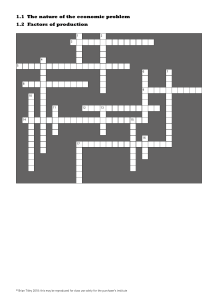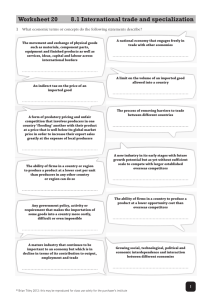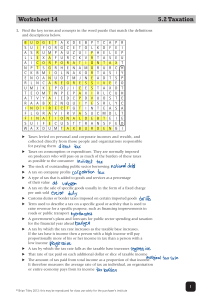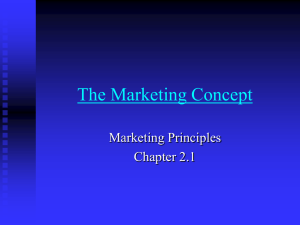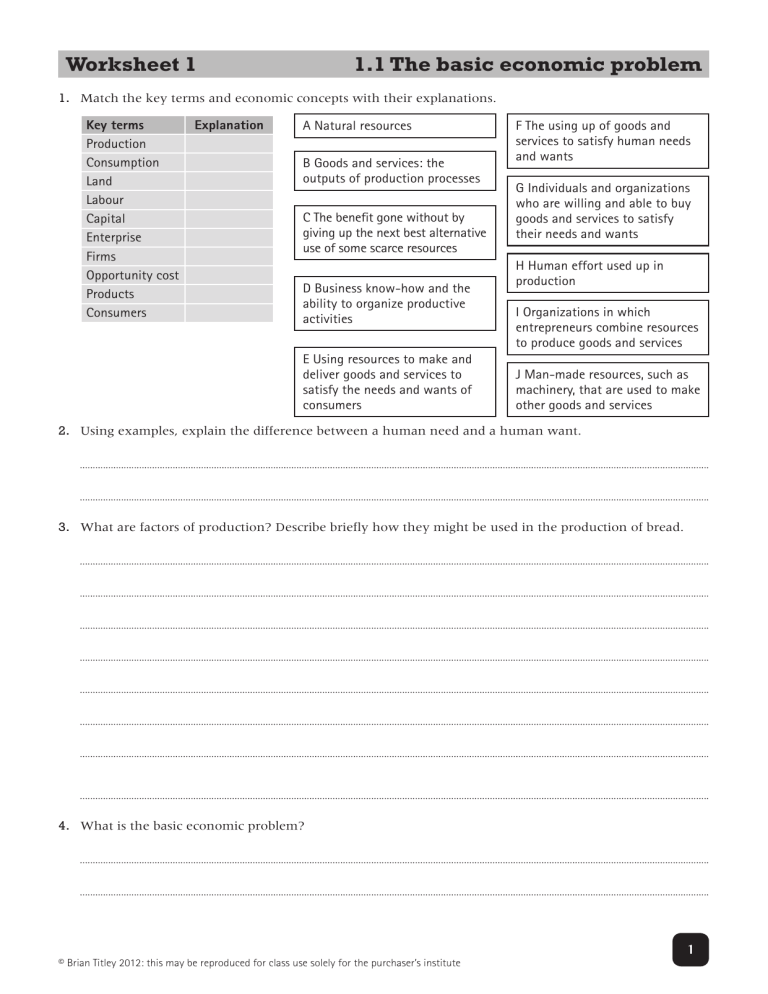
Worksheet 1 1.1 The basic economic problem 1. Match the key terms and economic concepts with their explanations. Key terms Production Consumption Land Labour Capital Enterprise Firms Opportunity cost Products Consumers Explanation A Natural resources B Goods and services: the outputs of production processes C The benefit gone without by giving up the next best alternative use of some scarce resources D Business know-how and the ability to organize productive activities E Using resources to make and deliver goods and services to satisfy the needs and wants of consumers F The using up of goods and services to satisfy human needs and wants G Individuals and organizations who are willing and able to buy goods and services to satisfy their needs and wants H Human effort used up in production I Organizations in which entrepreneurs combine resources to produce goods and services J Man-made resources, such as machinery, that are used to make other goods and services 2. Using examples, explain the difference between a human need and a human want. 3. What are factors of production? Describe briefly how they might be used in the production of bread. 4. What is the basic economic problem? © Brian Titley 2012: this may be reproduced for class use solely for the purchaser’s institute 1 5. Explain why the basic economic problem will even affect Bill Gates (Founder and Chairman of Microsoft and one of the world’s wealthiest people). 6. A firm currently produces 500 units of a good X and 300 of a good Y using its resources. In the following week it decides to produce 600 units of X and 250 of Y. What is the opportunity cost of the decision to produce 100 more units of X? 7. (i) What is a production possibility curve? (ii) In the diagram below, country A is currently producing at point A. What would be the opportunity cost of a decision to reallocate its resources to produce at point B so it could produce more cheese? Cheese (tonnes per month) 500 400 300 200 100 0 © Brian Titley 2012: this may be reproduced for class use solely for the purchaser’s institute B A 100 200 300 Textiles and clothing (tonnes per month) 2
